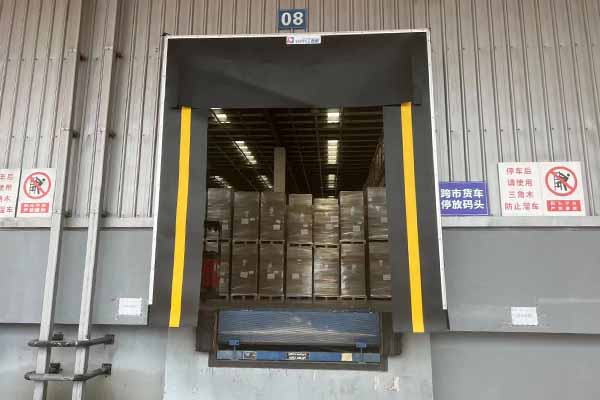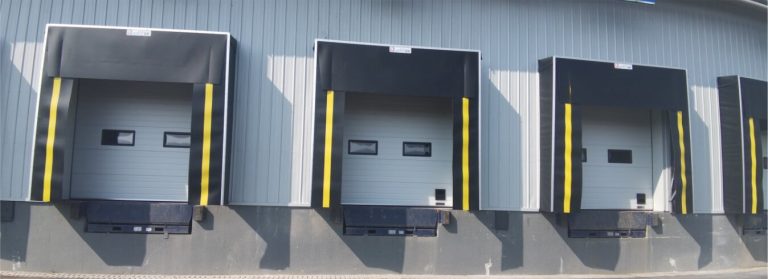As the New Zealand industry continues to grow, the need for efficient and safe loading and unloading of goods is increasing. The Loading Dock Leveler has become an indispensable piece of equipment in the logistics, manufacturing and warehousing sectors. In this article, we will introduce the difference between Hydraulic Dock Leveler and Mechanical Dock Leveler, analyze their specific application scenarios in the New Zealand industry, as well as their relationship with Dock Shelter and Sectional Door . and how they work together with Dock Shelters and Sectional Doors to improve loading and unloading efficiency.
What is a Loading Dock Leveler?
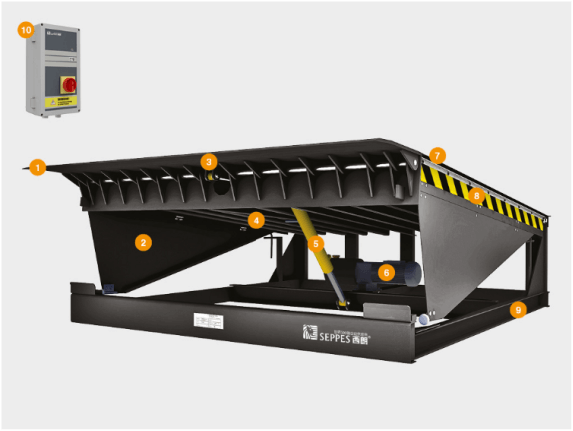
A Loading Dock Leveler is a device used to connect the difference in height between a truck and a warehouse to ensure a smooth transition during loading and unloading. Its purpose is to reduce the waste of labor, time and energy, and to improve the safety of loading and unloading operations. There are many types of loading and unloading platforms, of which hydraulic loading and unloading platforms and mechanical loading and unloading platforms are the two most common.
Hydraulic Dock Leveler
Hydraulic Dock Levelers operate using a hydraulic system, allowing them to automatically lift and lower to adjust the height difference between trucks and loading/unloading ports, ensuring a smooth transfer of goods. Its main technical parameters include:
Carrying capacity: common models can carry 6-15 tons of goods.
Size: standard width is 2000mm, length is 2500mm, can be customized according to the site requirements.
Control system: Equipped with electro-hydraulic control device, easy to operate, one-button start.
Safety: Equipped with anti-slip surface and safety locking device to prevent accidental slipping.
Mechanical Dock Leveler
Different from hydraulic dock leveler, mechanical dock leveler mainly relies on spring and mechanical manual operation system to adjust the height. With its simple structure and low maintenance cost, it is suitable for small and medium-sized enterprises and scenes with low loading and unloading frequency. Its technical parameters are as follows:
Carrying capacity: usually can carry about 6 tons.
Operation mode: it relies on mechanical spring system to adjust and requires manual operation.
Maintenance cost: relatively simple structure, low maintenance and repair cost.
The difference between hydraulic and mechanical loading dock leveler
Convenience of operation: Hydraulic platforms have a high degree of automation and are suitable for frequent operations; mechanical platforms need to be operated manually.
Maintenance requirements: Hydraulic system requires regular maintenance, while mechanical platforms have simple maintenance and lower cost.
Application scenarios: hydraulic platforms are suitable for high-frequency loading and unloading scenarios, such as large logistics centers; mechanical platforms are suitable for small and medium-sized enterprises with less loading and unloading needs.
Synergies between loading dock leveler and other dock equipment
In the New Zealand industry, loading docks are often used in conjunction with Dock Shelters and Sectional Doors to form a complete loading and unloading system. The synergy of these devices not only improves the efficiency of loading and unloading, but also enhances the safety and environmental protection of the entire warehousing and logistics system.
1. Dock Shelter
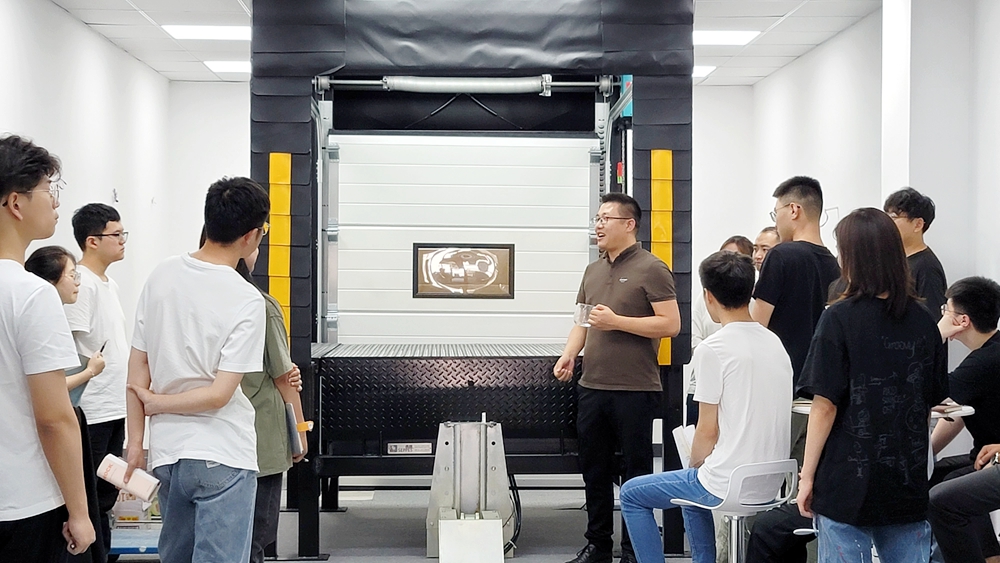
Door Shelter is a sealing system, usually used in loading and unloading of goods to close the gap between the truck and the warehouse, to prevent the outside world of wind and rain, dust into the warehouse. Its technical advantages include:
Effective sealing ensures that external environmental factors do not affect the loading and unloading process, making it especially suitable for New Zealand’s changeable climate.
Protecting goods: effectively preventing the impact of wind, sand, rain and temperature changes on goods.
2. Industrial Sectional Door
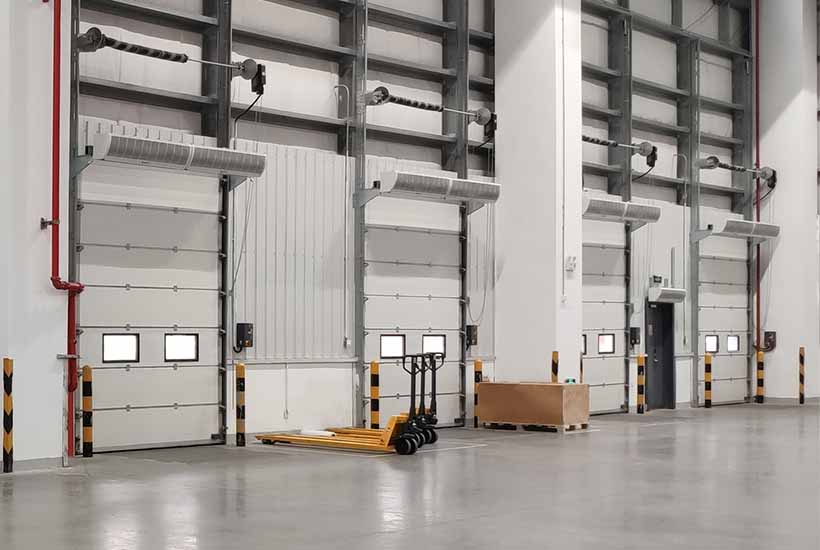
Sectional Door is used to close the warehouse and loading/unloading area, with excellent heat preservation, windproof and soundproof effect. The technical characteristics are as follows:
Material: High-strength polyurethane filled door panels with good heat insulation.
Opening and closing speed: The door body opens and closes quickly, suitable for high-frequency logistics operations.
Durability: Adapt to New Zealand’s bad weather, the door body has strong wind resistance.
Why are they chosen for New Zealand industrial sites?
Improved logistics efficiency: Hydraulic loading platforms can significantly reduce loading and unloading times and improve overall operational efficiency.
Meeting climate challenges: Dock shelters and industrial sectional doors ensure that loading and unloading areas are protected from the elements, safeguarding the quality of goods.
Enhanced corporate image: Efficient, modern equipment enhances the image of the operation and strengthens customer trust.
How to choose the right loading platform equipment for New Zealand?
1. Choose according to the frequency of use
For high-frequency loading and unloading scenarios, such as large logistics centers or manufacturing enterprises. It is recommended to choose hydraulic dock levelers that are easier to operate and more efficient. For small and medium-sized enterprises, mechanical dock levelers may be a more cost-effective choice.
2. Consider the climate
Loading dock levelers have become indispensable to New Zealand’s logistics, manufacturing and warehousing industries.
3. Ensure safety and compliance
When choosing loading dock equipment. It is important to ensure that it complies with international safety standards and has non-slip surfaces and safety locking mechanisms to minimize safety hazards.
Specific application examples in industrial sites in New Zealand
Loading dock levelers are widely used in logistics centers, food processing plants and storage facilities in New Zealand. For example, installing a hydraulic dock leveler in a large food processing plant improves the efficiency of cargo loading and unloading and ensures the rapid handling of perishable goods. In addition, at the logistics center in Auckland, this equipment has helped the company automate the management of large-scale goods.
Loading dock leveler improve operational efficiency at industrial sites in New Zealand
The widespread use of loading and unloading platforms at industrial sites in New Zealand not only improves logistics efficiency, but also plays an important role in addressing climate challenges, securing cargo and reducing operating costs. Both hydraulic and mechanical loading dock levelers offer the best solution for each application. Used in conjunction with dock shelters and industrial sectional doors. They even create an efficient and safe loading dock system for New Zealand businesses. By choosing the right loading and unloading equipment, companies can dramatically improve their operational efficiency and gain an advantage over their competitors in the global marketplace.
Recommended Related Brands
SEPPES: Known for its high quality hydraulic and mechanical loading platforms, particularly suited to the logistics and manufacturing industries in New Zealand.
Hormann: Its industrial sectional door and loading platform equipment is well regarded, especially in the European market.
Rite-Hite: Specializing in safety and energy efficient design, Rite-Hite offers hydraulic loading platforms for high frequency loading and unloading.
FAQ
What are the main differences between hydraulic and mechanical loading platforms?
Hydraulic leveler are highly automated and suitable for high-frequency operations; mechanical dock leveler are suitable for lower budgets.
Which industries are suitable for loading and unloading platforms?
Logistics, warehousing, manufacturing and food processing industries.
What role do dock shelters and industrial sectional doors play in the New Zealand climate?
They protect goods by preventing outside wind, rain, sand and dust from entering the warehouse.


